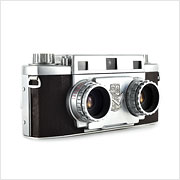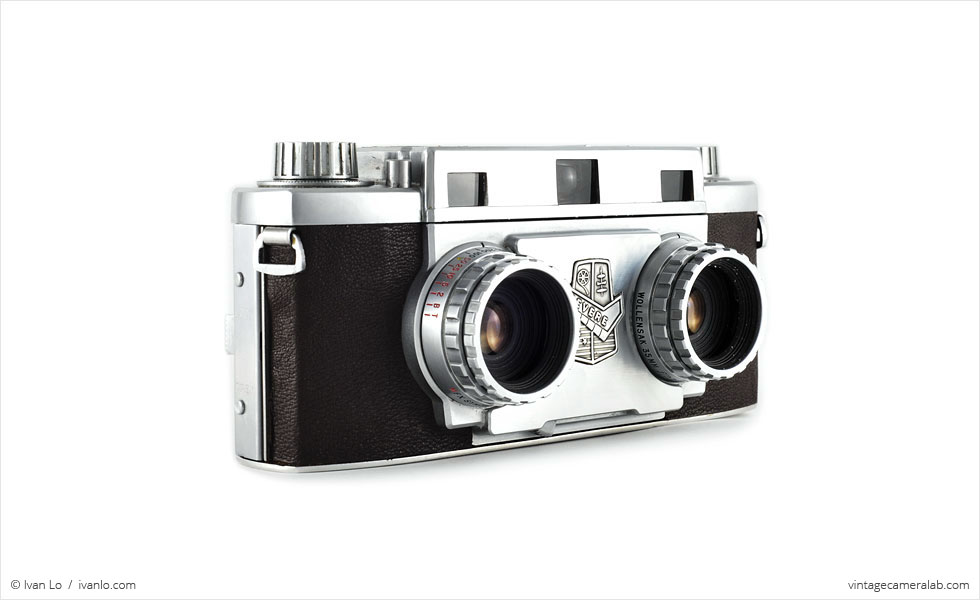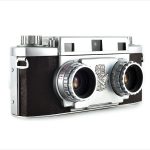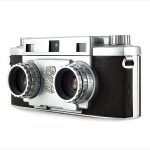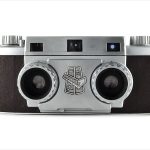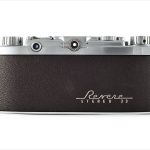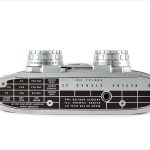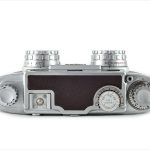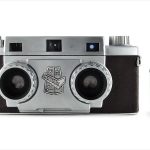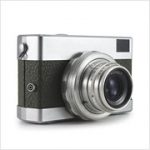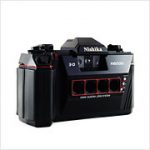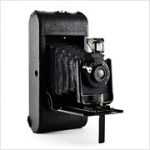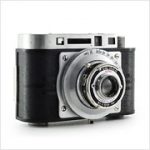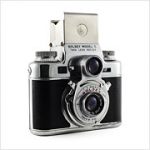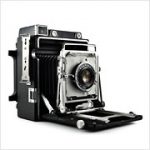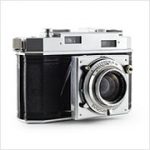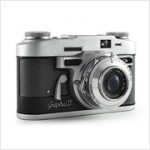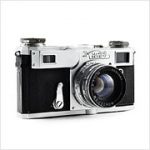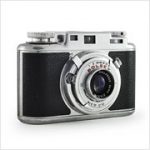Revere Stereo 33 Specifications
| Manufacturer: | Revere Camera Co. |
| Origin: | USA |
| Made in: | Chicago, IL, USA |
| Introduced: | 1953 |
| Type: | Rangefinder, Stereo |
| Format: | 135 Film |
| Dimensions: | 17.2 x 7.8 x 6.4 cm |
Revere Stereo 33 Overview
The Revere Stereo 33 is a 3-D stereo rangefinder camera produced in the 1950s by the Revere Camera Co. of Chicago, Ilinois. Sadly, Revere only made three still cameras and two of them are stereo rangefinders (the other one was released under the Wollensak brand and is basically the same camera with different lenses and shutters), the third one being a plastic automatic camera that takes 127 film. There were a number of 126 film cameras sold under the Revere name in the ’60s but they were produced by Minolta under license.
Stereo cameras are unique because two lenses are used to simultaneously expose two frames at once. The resulting images can then be inserted into a stereoscope which results in a three dimensional image when viewed because the lenses simulate binocular vision. Stereo cameras were very popular in the 1950s with a wide range of manufacturers including Eastman Kodak jumping on the bandwagon. Unfortunately, the stereo camera craze didn’t last very long as a novelty and supply disappeared for the most part save a brief and unsuccessful resurgence in the 1980s until digital camera manufacturers like Fujifilm and Panasonic unsuccessfully attempted to revive it again in the late 2000s.
The Stereo 33 comes equipped with a pair of coupled Wollensak 35mm f/2.7 Amaton lenses with a minimum focus distance of three feet. Aperture settings can be made by rotating the lens barrel on the user’s left side while shutter speeds ranging from 1/2 to 1/300 seconds as well as bulb and time can be selected by rotating the right-hand lens barrel. Focus is achieved by rotating the dial located on the top plate while peering through the rangefinder window to the left of the viewfinder window. Parallax error can be curbed by rotating the switch around the viewfinder eyepiece to select different focus zones. The shutter button (with threaded socket) is located on the top plate on the right. To cock the shutters, either use the small recessed lever beneath the lenses or twist the dial on the far right-hand side of the top plate that will both advance the film and rotate the frame counter at its base. The Stereo 33 can make 29 pairs of exposures on a 36-frame roll of standard 35mm film.
I’ve always been fascinated by stereo cameras ever since I began collecting but never actually owned one until my Brother bought this very well-preserved example for me as a thank you for some production work I did for him. Unlike a lot of cheap, mostly plastic stereo cameras out there, the Stereo 33 is made out of solid aluminum and has a very pleasing weight to it. There’s a lot to like about this camera, from the engraved logo between the lenses to the classy typography on the film door to the handy exposure guide printed on the bottom. I’d say my future collection of stereo cameras is off to a good start.
Find your very own Revere Stereo 33 on eBay.
McKeown, James M. and Joan C. McKeown’s Price Guide to Antique and Classic Cameras, 2001-2002. (Grantsburg, WI, USA: Centennial Photo Service, 2001), p 560.
